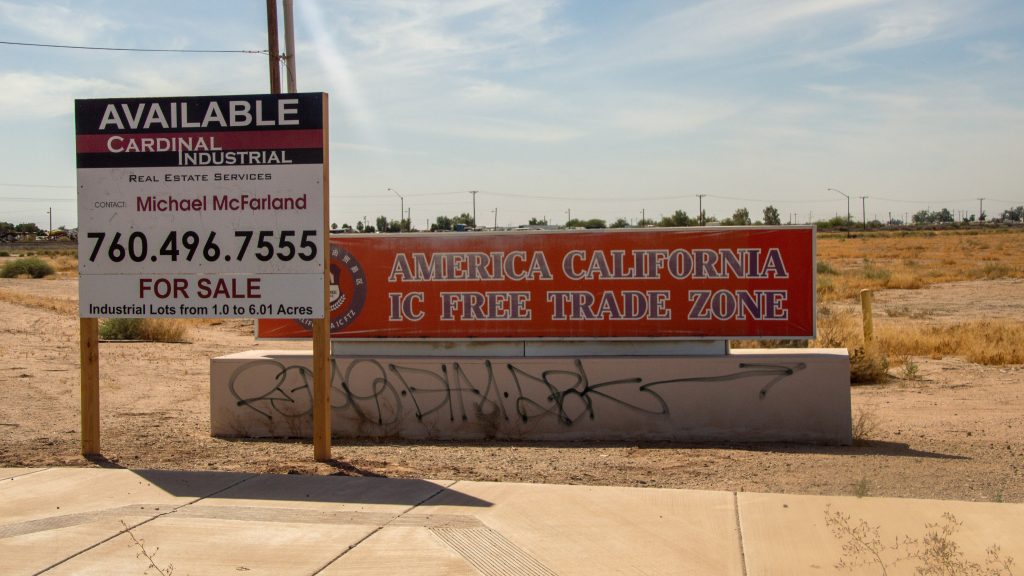
What is a Maquiladora?
All along the New River in Mexicali, you have maquiladoras, which are foreign owned factories similar to sweatshops where they assemble things like cars and electronics. They take raw materials, often hazardous, from their country of origin and have low-wage Mexican workers assemble them into finished goods, which are then shipped back tariff-free. Workers assemble electronics, medical equipment, automotive parts, communications equipment, and other goods. The vast majority of maquiladoras are owned by US companies43 including General Motors, Zenith Electronics, Chrysler, Ford Motors, and General Electric39. A smaller number are owned by companies in Germany, Canada, Japan, Britain, Australia, and other countries44.
The toxic waste from maquiladoras is often improperly disposed of in Mexico45, which has environmental laws that are generally as strict as those in the US, but a policy of allowing self reporting that allows pollution to go unregulated39. Polluted wastewater flows through the New River, and factory emissions flow through the air39. Their waste is a burden to the people that damages ecosystems and harms the surrounding communities, both in Mexico and the US, as it flows through Mexicali, through the permeable border wall, and north to the Salton Sea46.
A History, and Present, of Exploitation
Maquiladoras were formed In the 1960s, after President Kennedy ended the Bracero program47, which had allowed approximately 46 million Mexican men to work on short term labor contracts in the US from 1942 to 196448. Most braceros worked as agricultural field hands in positions left by soldiers who left for World War II. They faced substandard housing, contract violations, physical mistreatment49, and wage theft48. However, thanks to the work of Cesar Chavez, the Farmworkers’ Movement, and other activists, by the 1960s, the American people were no longer willing to put up with the exploitation and poor working conditions braceros experienced in the US, and the Bracero Program ended. Nonetheless, when the workers returned to Mexico they needed employment47, and the US continued to demand labor at wages lower than those given to American workers47. To solve both problems, the US and Mexican governments collaboratively developed the maquiladora program, which was advertised as a win-win for both countries and their people.

Working conditions in maquiladoras today are similar to those of nineteenth-century US sweatshops. Jobs are hyper-specialized, so they require repetitive, microscopic assembly work under stressful conditions with very little autonomy50. Employees work long hours with few rest periods, and are also exposed to toxic chemicals, including solvents and carcinogens, in poorly ventilated factories39. Workers are provided with insufficient information on the toxicity of the materials and are often unaware of the perils involved in their jobs. Additionally, maquiladoras lack industrial hygiene and security measures, so workers are at risk due to inadequate lighting, excessive noise, and unsafe machinery39. These facilities have been involved in a number of violations of toxic waste transport laws, documented discharges of dangerous wastes, and injuries from smoke inhalation due to fires39. As a result, workers suffer from musculoskeletal disorders from un-ergonomic working conditions and acute health effects correlated with chemical exposures50. These conditions exist across many fields; textile and apparel workers, for instance, demonstrate pulmonary problems, eye problems, dermatitis, and hand injuries51. Electronic assembly workers report eye irritation, visual acuity loss, headaches, nervousness, and allergies51. Women in maquiladoras are more likely than workers in other sectors to deliver babies with low birth weights51. Some might point out that these employees are recruited from impoverished areas near the maquiladoras, and that, consequently, assigning causality related to the maquiladoras is difficult. The factories, by virtue of common sense alone, cannot be eliminated as causes—the dilemma does, however, indicate that there is exploitation occurring across many dimensions in the lives of maquiladora workers50, 51.
In addition to affecting the health of their workers, the maquiladoras have warped the sociological fabric of the areas they are in. They have brought massive population growth to the border cities, but little infrastructure to support this growth39. The population of Mexicali has doubled since the 1980s, when NAFTA popularized the maquiladora system, but little has been done to increase its infrastructural capacity39. In the 1990s, the lack of sewage infrastructure meant that raw sewage was dumped into the New River drainage daily27. The insufficient treatment capacity still leads to overflows that release raw sewage into the river multiple times a year53 .
The growth in population accompanied by a lack of reinvestment has caused a shortage of affordable housing. This, in turn, has led to a surge in the number of people living in colonias, subdivisions without water, sewage, electricity, paved roads, or other basic utilities39. The impact of the maquiladoras goes far beyond the hazards of the working conditions. They fuel the very deprivation that drives workers to their door.
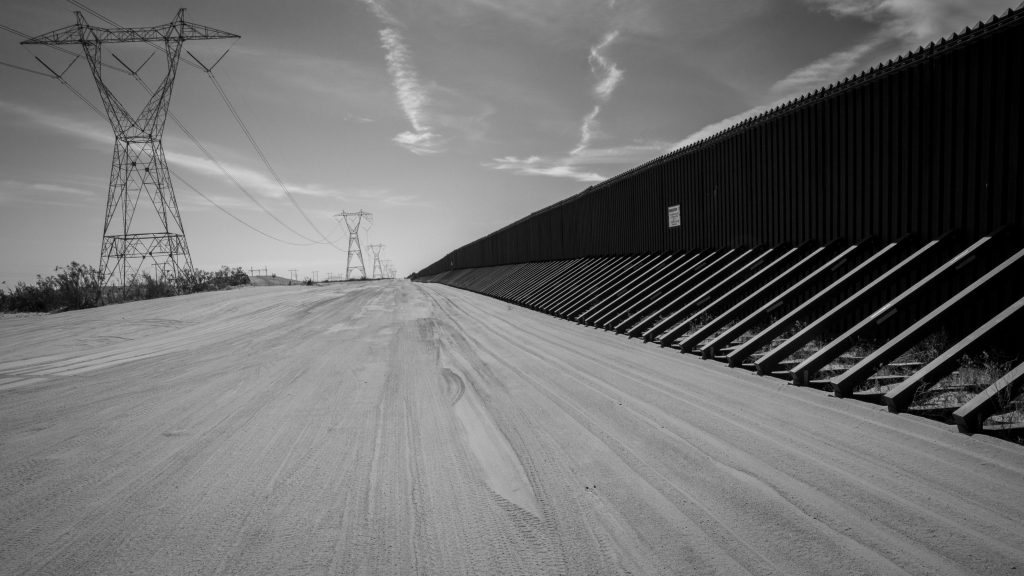
Conditions for Women
Maquiladoras create special hardships for women and families. They take advantage of the social conditions that make it acceptable to pay women less than men. Managers see women’s work as unskilled–though many paradoxically believe that women have nimble fingers, dexterity, docility, and the capacity to do monotonous activities. Managers don’t seem to consider the fact that women hold such positions because those are the only jobs for which they are hired57. Counter to the arguments that women’s work is less valuable, however, is the fact that when maquiladoras first opened, over 2/3 of all hires were women, a figure that reached 80-90% in some cities39. In 1979, the maquiladora workforce was composed of 77% women and 23% men, but employers soon exhausted the supply of women in the labor market, and had to start hiring men as well39. By 2003, the demographics had shifted so that only 54% of maquiladora employees were women while 46% were men54.
Today, managers continue to refer to jobs in maquiladoras as women’s work. They often prefer to hire married women with children, who they see as more responsible due to the economic need imposed by their families55. Married women are more likely to leave the home to increase the household income by working in depressed economic markets than other workers. Since they are desperate for work, they will accept any wage that is offered. Womens’ widespread employment at low wages in maquiladoras further drives down the price of their labor throughout the local market55.

Despite the preference for hiring mothers, Human Rights Watch reports that women are forced to submit to pre-employment pregnancy tests (or show used sanitary napkins to prove they are not pregnant upon hire—a practice that is particularly common in Juarez)56. Managers often refuse to pay wages during pregnancy, and threaten women with losing their positions if they take maternity leave. Such practices are inherently sexist, as pregnancy is a condition that can only happen to women56.
The wide scale employment of women in the maquiladora system has caused an increase in male unemployment and forced men to leave their families to migrate into the US, leaving many towns with only women, children, and elderly men today. Often, families first move to the border region in search of work. The women find jobs in maquiladoras, but men, with few local employment prospects, must cross the border alone to help earn money for their families. Family members who remain near the border in Mexico might follow later, but in the meantime, they remain with their family incomplete, as survival requires them to combine wages, health care and other benefits from the maquiladora with remittances from those who have gone to the United States57. Maquiladoras engage in dehumanizing practices against their employees, as they drive down local wages, break apart communities, and disrupt family life. The maquiladora system thereby causes widespread reverberations through family structures across Mexico and the US border region.
Maquiladoras Disregard Covid-19 Closures
On March 31, 2020, as the Covid-19 pandemic took hold, President Andres Manuel Lopez Obrador ordered all non-essential businesses to close, but, under pressure from US companies, the maquiladoras refused. Workers, afraid of getting ill at work and spreading the deadly disease to their families, peacefully protested outside their workplaces. On April 10th, the Baja California government and the federal Secretary of Health in Mexicali stepped in and closed 10 maquiladoras in Mexicali for failing to comply with the required safety closures58, 59. However, US manufacturers and the US government continued to apply pressure to reopen them. On May 18th, the Mexican government announced that the auto manufacturing, aerospace, mining, industrial construction, and railway sectors were to be deemed essential services, and workers were forced to return60, once again imposing dehumanizing and life threatening practices that affect maquiladora workers themselves as well as the wider community.
Learn more about Environmental Justice in the Imperial Valley.
Learn More
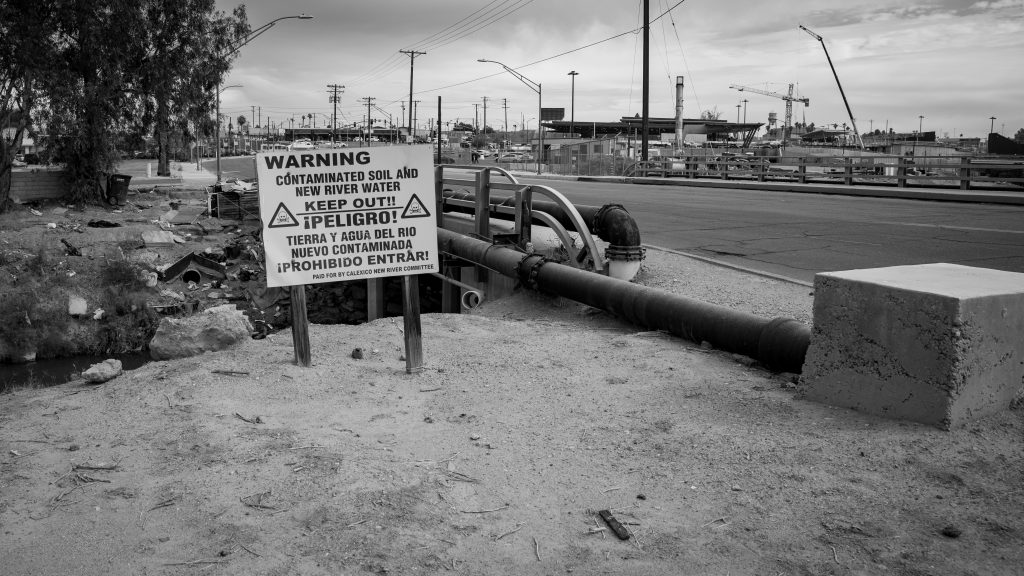
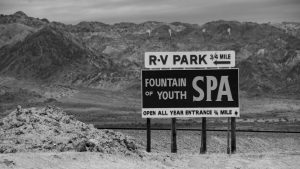
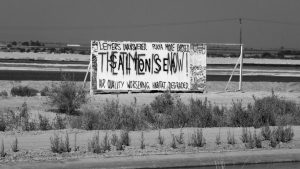


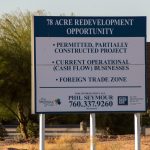




43. Galhardi, Regina M.A.A. Rep. Maquiladoras Prospects of Regional Integration and Globalization. Geneva: International Labour Office Publications, 1998. http://ilo.org/wcmsp5/groups/public/—ed_emp/documents/publication/wcms_120313.pdf.
44. “What Are Maquiladoras and Why Are They So Common Along the US-Mexican Border?” CHTCS. CHTCS Intel, September 26, 2017. https://www.chtcs.com/what-are-maquiladoras-and-why-are-they-so-common-along-the-us-mexican-border/.
45. Meyers, Zoe. “A Toxic Dumping Ground Festers on the Border.” Desert Sun, December 5, 2018. https://www.google.com/url?q=https://www.desertsun.com/in-depth/news/environment/border-pollution/poisoned-cities/2018/12/05/toxic-dumping-ground-mexicali-mexico-border-pollution/1295722002/&sa=D&source=docs&ust=1640069815744825&usg=AOvVaw1o9NuYrBoj1qA_B1WNABx1.
46. Meyers, Zoe. “This Mexican City Was Transformed by Factories. Its People Pay a Heavy Price.” Desert Sun, December 5, 2018. https://www.desertsun.com/in-depth/news/environment/border-pollution/poisoned-cities/2018/12/05/mexicali-industrial-city-factories-maquiladoras-border-pollution/1295896002/.
47. Gantz, David A. “New Challenges for the Maquiladoras : Legal and Policy Implications of NAFTA Article 303 for United States- Mexico Trade.” The Denver Journal of International Law and Policy 30.2002, no. 1 (2002): 1–54.
48. “Teaching.” Bracero History Archive. Center for History and New Media, 2021. http://braceroarchive.org/teaching.
49. Murray, Douglas L. “The Abolition of El Cortito, the Short-Handled Hoe: A Case Study in Social Conflict and State Policy in California Agriculture.” Social Problems 30, no. 1 (1982): 26–39. https://doi.org/10.2307/800182.
50. Back to the future: Sweatshop conditions on the Mexico-U.S. Border. II. occupational health impact of Maquiladora industrial activity
51. Guendelman, S, and M J Silberg. “The Health Consequences of Maquiladora Work: Women on the US-Mexican Border.” American Journal of Public Health 83, no. 1 (1993): 37–44. https://doi.org/10.2105/ajph.83.1.37.
52. Jasis, M, and S Guendelman. “[Maquiladoras and Women on the US-Mexican Border: a Benefit or a Detriment to Occupational Health?].” Salud Publica Mex. 35, no. 6 (November 1993): 620–29. https://digitalcommons.du.edu/cgi/viewcontent.cgi?article=1452&context=djilp.
53. Varin, Elizabeth, and Richard Montenegro Brown. “Frustrated Imperial County Board Floats Renaming New River After Rep. Vargas.” Calexico Chronicle, September 24, 2020. https://calexicochronicle.com/2020/09/local-news/frustrated-county-board-floats-renaming-new-river/.
54. Ramírez, Cirila Quinero. “Panel of Gender Studies of XIV International Economic History Congress.” In Female Work in Mexican Maquiladoras: “Naturally” Unskilled Work or Creating Unskilled Work for Women Workers? Matamoros: El Colegio de la Frontera Norte Regional Office in Matamoros, 2006. https://www.researchgate.net/profile/Cirila_Quintero/publication/252592588_Female_Work_in_Mexican_Maquiladoras_Naturally_Unskilled_Work_or_Creating_Unskilled_Work_for_Women_Workers/links/5550db3f08ae93634ec9f4aa/Female-Work-in-Mexican-Maquiladoras-Naturally-Unskilled-Work-or-Creating-Unskilled-Work-for-Women-Workers.pdf.
55. Fussell, M. Elizabeth. “Meeting of the American Sociological Association.” In Who Works in Tijuana’s Maquiladoras?: A Labor Market Analysis. Madison, WI: Center for Demography and Ecology, University of Wisconsin–Madison, 1997. https://cde.wisc.edu/wp-content/uploads/sites/839/2019/01/cde-working-paper-1997-11.pdf.
56. “A Job or Your Rights: Continued Sex Discrimination in Mexico’s Maquiladora Sector.” A Job or Your Rights: Continued Sex Discrimination in Mexico’s Maquiladora Sector. Human Rights Watch. Accessed December 21, 2021. https://www.hrw.org/legacy/reports98/women2/Maqui98d.htm.
57. Kopinak, Kathryn. Working paper. The Relationship Between Employment in Maquiladora Industries In Mexico and Labor Migration to the United States, 2005. https://ccis.ucsd.edu/_files/wp120.pdf
58. Arellano Sarmiento, Luis. “Clausuran 10 Maquiladoras En Mexicali Por No Respetar Cuarentena Por COVID-19.” Animal Politico. April 10, 2020. https://www.animalpolitico.com/2020/04/clausuran-10-maquiladoras-en-mexicali-por-no-respetar-cuarentena-por-covid-19/.
59. Fry, Wendy. “Low-Wage Maquiladora Workers Are Dying Young in Mexico from Coronavirus.” The San Diego Union-Tribune, June 5, 2020. https://www.sandiegouniontribune.com/news/border-baja-california/story/2020-06-05/mexico-factory-workers-coronavirus.
60. “Tracking the Impact of the Covid-19 Pandemic on Mexican Maquila Workers.” Maquila Solidarity Network. Accessed March 2021. https://www.maquilasolidarity.org/en/our-work/tracking-impact-covid-19-pandemic-mexican-maquila-workers.